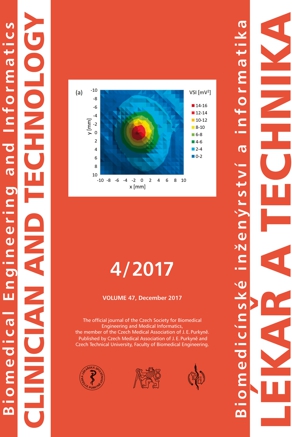ANALYSIS OF ULTRASOUND FIELD PARAMETERS DURING SONICATION EXPERIMENTS IN VITRO—INFLUENCE OF LABORATORY GLASS AND PLASTICS
Keywords:
ultrasound, ultrasound field, sonication, in vitro experiment, ultrasound dosimetryAbstract
Apart from being a powerful medical imaging technique ultrasound can also be used as a therapeutic modality. In vitro sonication experiments performed on cultured cells are one of primary research methods. However present sonication protocols and methods meet many effects influencing the final ultrasound dose experienced by the sonicated samples. The main aim of this study is to assess the influence of laboratory glass and plastics on ultrasound field parameters during in vitro sonication experiments. We performed measurements of ultrasound field parameters (ultrasound intensity and its local distribution) behind commonly used laboratory glass and plastics placed into the far field region of an ultrasound transducer. We tested the influence of several types of culture dishes, culture plates and sample test tubes. Culture dishes reduced ultrasound intensity by tens of percent but did not affect the shape of ultrasound field. 6-well plate reduced ultrasound intensity only by 5 %. Culture plates with well diameter smaller than the diameter of the main lobe of ultrasound beam focus ultrasound energy. Laboratory glass and plastics with curved surface also focus ultrasound energy. We proved that laboratory glass and plastics considerably affect ultrasound field parameters. Thus sonicated samples are exposed to different ultrasound conditions compared to those reported in some of scientific articles. Rest of factors (standing waves formation, streaming, cell mixing, heating and homogeneity of ultrasound field in terms of near and far ultrasound field) affecting the ultrasound field parameters experienced by sonicated samples also need to be studied further.
Downloads
Published
Issue
Section
License
Copyright (c) 2018 Martin Snehota, Jaromir Vachutka, Ladislav Dolezal, Hana Kolarova, Zuzana Mala, Ludmila Zarska

This work is licensed under a Creative Commons Attribution 4.0 International License.
Authors who publish with this journal agree to the following terms:
- Authors retain copyright and grant the journal right of the first publication with the work simultaneously licensed under a Creative Commons Attribution License (https://creativecommons.org/licenses/by/4.0/) that allows others to share the work with an acknowledgment of the work's authorship and initial publication in CTJ.
- Authors are able to enter into separate, additional contractual arrangements for the non-exclusive distribution of the journal’s published version of the work (e.g., post it to an institutional repository or publish it in a book), with an acknowledgment of its initial publication in this journal.
- Authors are permitted and encouraged to post their work online (e.g., in institutional repositories or on their website or ResearchGate) prior to and during the submission process, as it can lead to productive exchanges.
CTJ requires that all of the content of the manuscript has been created by its respective authors or that permission to use a copyrighted material has been obtained by the authors before submitting the manuscript to CTJ. CTJ requires that authors have not used any copyrighted material illegally, as for example a picture from another journal or book, a photo, etc. It is the author’s responsibility to use only materials not violating the copyright law. When in doubt, CTJ may ask the authors to supply the pertinent permission or agreement about the use of a copyrighted material.
The opinions expressed in CTJ articles are those of authors and do not necessarily reflect the views of the publishers or the Czech Society for Biomedical Engineering and Medical Informatics.


